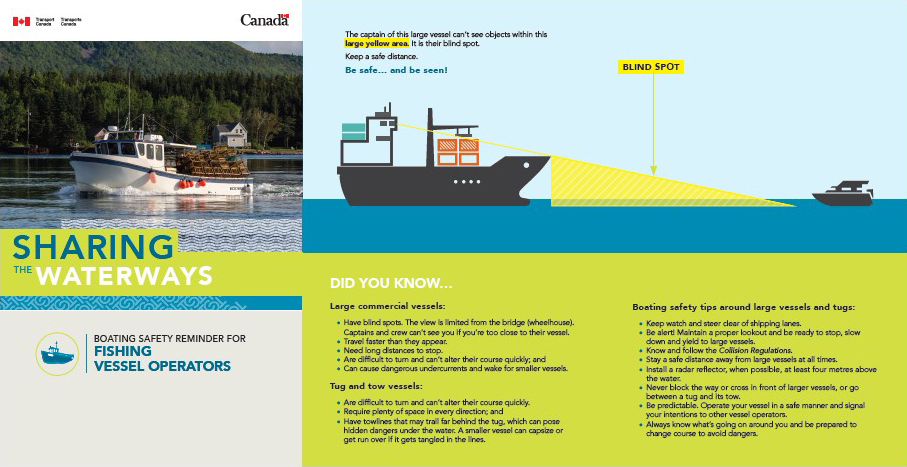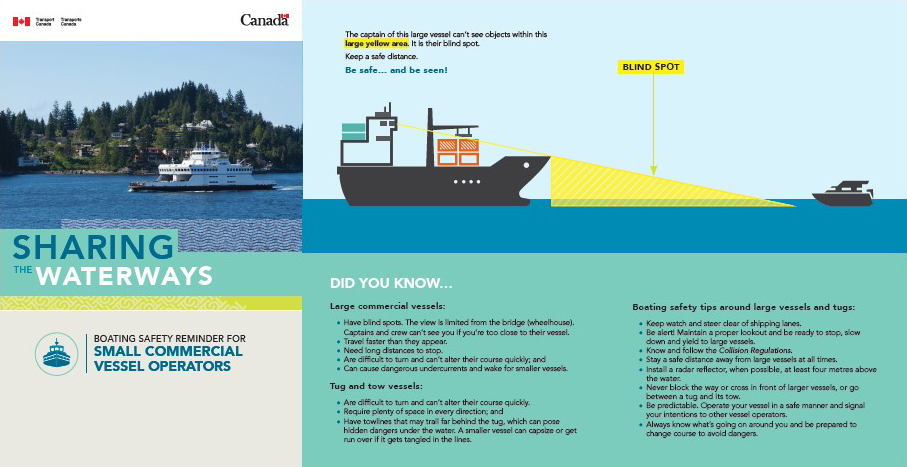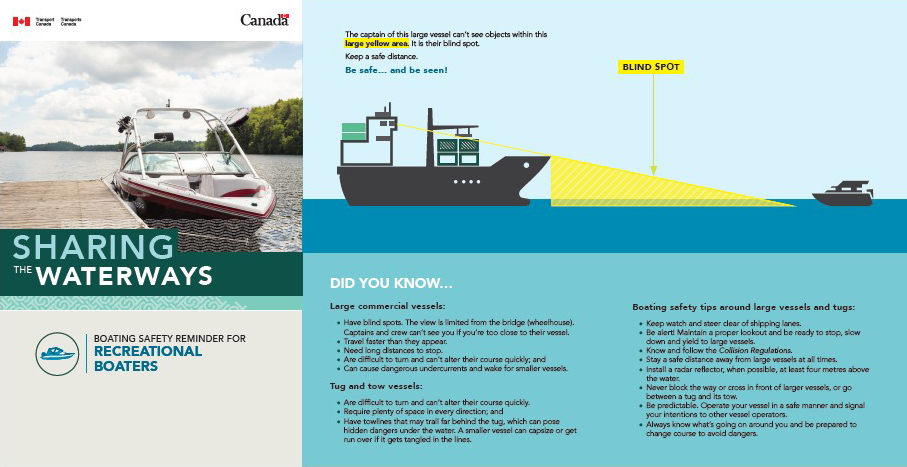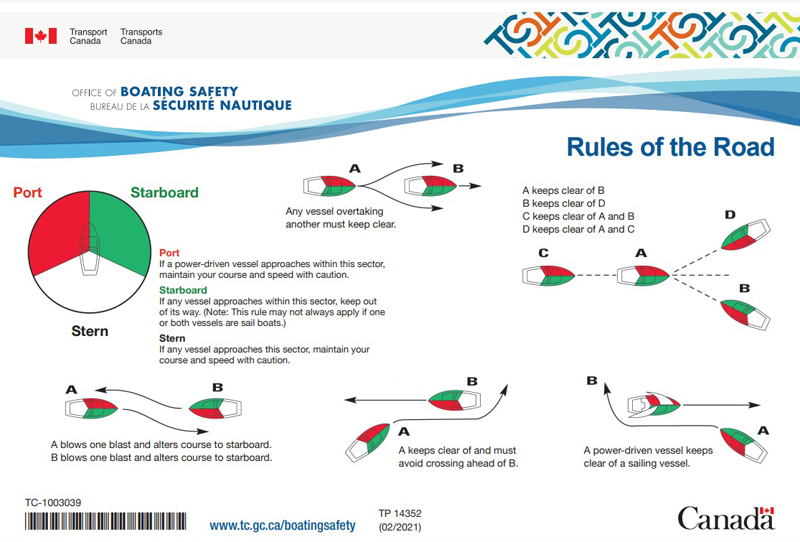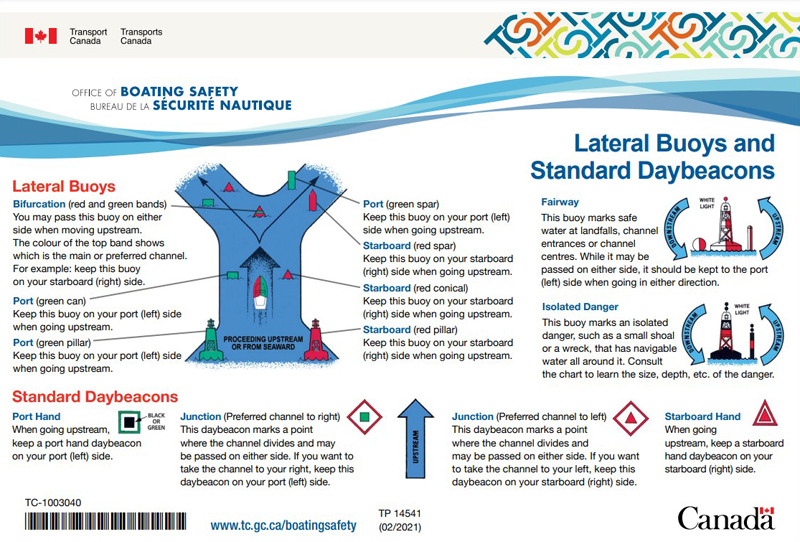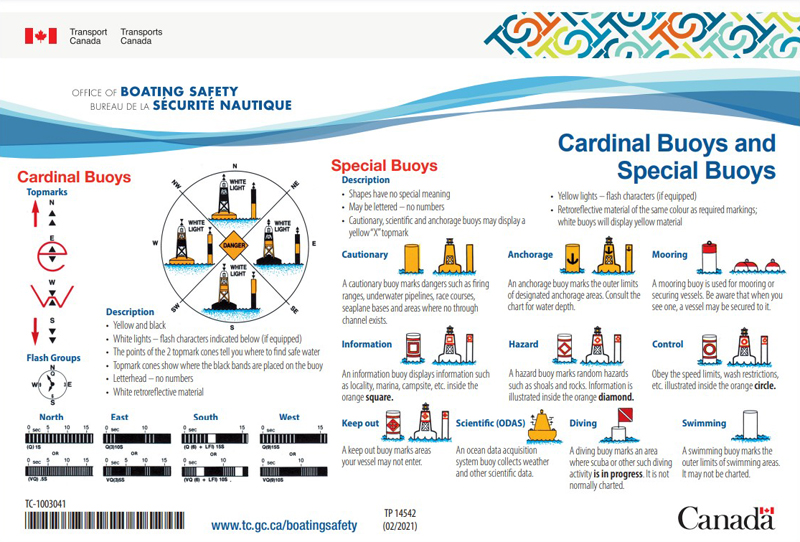As the owner of a smaller vessel, knowing how to safely share the waterways with larger vessels is critical to safe boating, especially when navigating busy and congested waterways. We have gathered some tips and resources below to help you stay safe on the water.
On this page
- Boating safety tips around large vessels and tugs
- Did you know
- Know who has the right of way
- Know the warning signals
- Downloadable and printable resources
Boating safety tips around large vessels and tugs
- Keep watch and steer clear of shipping lanes
- Be alert! Maintain a proper lookout and be ready to stop, slow down and yield to large vessels
- Know and follow the Collision Regulations
- Stay a safe distance away from large vessels at all times
- Never block the way or cross in front of larger vessels, or go between a tug and its tow
- Stay a safe distance away from large vessels at all times
- Be predictable. Operate your vessel in a safe manner and signal your intentions to other vessel operators
- Always know what's going on around you and be prepared to change course to avoid dangers
Did you know…
Large commercial vessels
- Have blind spots. The view is limited from the bridge (wheelhouse).
- Captains and crew can't see you if you're too close to their vessel.
- Travel faster than they appear.
- Need long distances to stop.
- Are difficult to turn and can't alter their course quickly; and
- Can cause dangerous undercurrents and wake for smaller vessels.
Tug and tow vessels
- Are difficult to turn and can't alter their course quickly.
- Require plenty of space in every direction.
- Have towlines that may trail far behind the tug, which can pose hidden dangers under the water.
- A smaller vessel can capsize or get run over if it gets tangled in the lines.
Know who has the right-of-way
Just like driving a vehicle, vessel operators need to know the "rules of the road." The Collision Regulations set out basic rules to help operators avoid hitting or being hit by another vessel. These regulations apply to all vessels, from canoes to supertankers.
Here are some key rules to know:
Note: The information below is a summary of Rules 9, 10, and 18. For the full text, please refer to the Collision Regulations.
Rule 9 – Summary
- Vessels less than 20 m in length, including sail boats and those engaged in fishing, shall not block or delay a vessel that can only safely navigate within the narrow channel.
- All vessels shall avoid crossing a narrow channel if it will block or delay a vessel that can only safely navigate within the narrow channel.
Rule 10 – Summary
- Vessels engaged in fishing shall not block or delay any vessel within a traffic lane; and
- Vessels less than 20 m in length and sail boats shall not block or delay any power-driven vessels following a traffic lane.
Rule 18 – Summary (unless mentioned in a previous rule)
All power-driven vessels underway must stay clear of other vessels that are:
- not under command,
- limited in their ability to move or change course,
- ones engaged in fishing, and
- sail boats
Sail boats must stay clear of other vessels that are:
- not under command,
- with limited ability to move or change course,
- engaged in fishing
Vessels engaged in fishing shall stay clear of other vessels that are:
- not under command, and
- with limited ability to move or change course
Know the warning signals
Large vessel operators will use the horn, whistle or lights to warn others if there is a danger of collision. The warning signals to know are:
| Horn or whistle | Light | What it means |
|---|---|---|
| Five short, rapid blasts | Five short, rapid flashes | Get out of the way now |
| One short blast | One short flash | I am altering my course to starboard |
| Two short blasts | Two short flashes | I am altering my course to port |
| Three short blasts | Three short flashes | I am operating in reverse |
Downloadable and printable resources
Rules of the road
(PDF, 333 KB)
Lateral buoys and standard daybeacons
(PDF, 274 KB)
Cardinal buoys and special buoys
(PDF, 959 KB)

